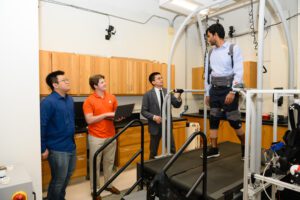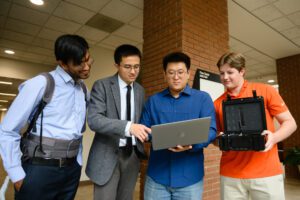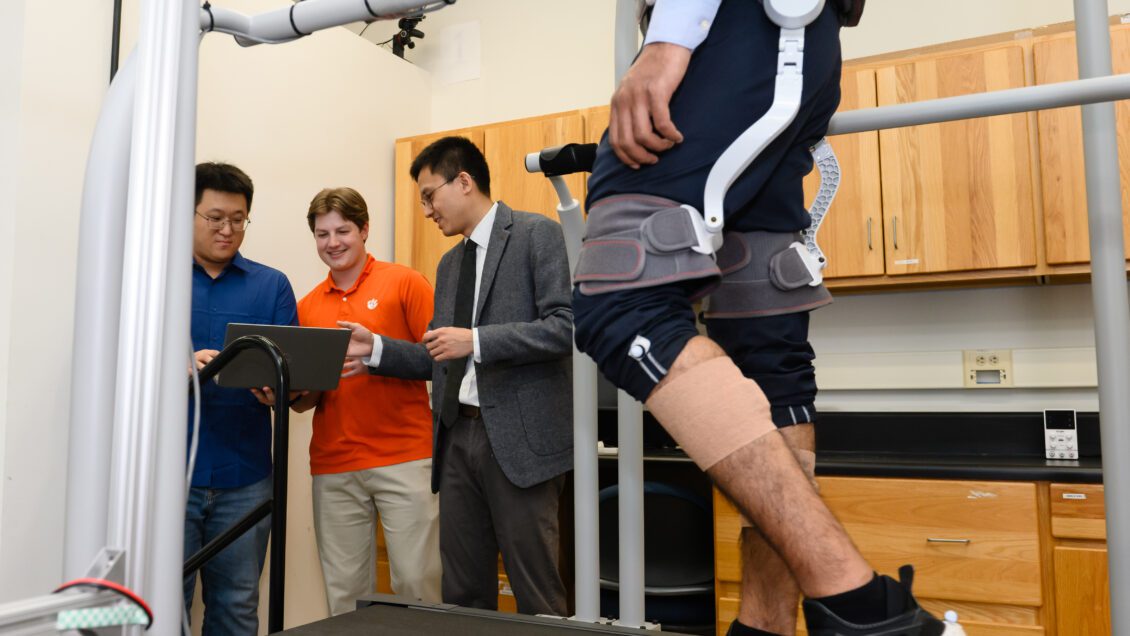Exoskeletons that are designed to help stroke patients walk, soldiers carry heavy loads and manufacturing workers avoid muscle fatigue could become easier to customize to each individual with the help of new research at Clemson University.
Ge Lv, an assistant professor of mechanical engineering and bioengineering, said the project he is leading focuses on exoskeletons for the legs but could later be applied to devices for the upper body.

The research has the potential to help expand the use of powered exoskeletons, which are robots that can be worn on the body to enhance physical abilities.
One of the major hurdles to more widespread use is that it typically takes a team of engineers and therapists hours of trial and error to customize a single exoskeleton for one person, Lv said.
Even then, the exoskeleton can be adapted for one type of movement, such as walking, but doesn’t accommodate the many different types of motion a person performs in a day, he said.
Instead, Lv and his team are working on new strategies that would help powered exoskeletons adapt to different tasks and people more quickly.
“A key feature is going to be rapid customization, meaning the exoskeleton is going to achieve the task quickly rather than having to wear the device for months before it knows what is going on,” Lv said.
Lv said the research was inspired in part by his grandfather, Zhenguo Xing, a policeman who suffered from Parkinson’s disease. Normally simple tasks such as walking or drinking a glass of water can be difficult for Parkinson’s sufferers because the disease causes tremors.
Lv wanted to do something to help.

He began his work with robots and exoskeletons when he went to the University of Texas at Dallas to pursue his Ph.D.
While working with stroke patients, he was surprised to learn it took almost a full work day for one patient to participate in experimental trials and rehabilitation.
“The exercises could assist people, but what is the cost in terms of finances or time?” he said. “I began to ask, can we do something as engineers to reduce these kinds of things? Can we lower the burden for therapists and patients?”
The experience gave him the idea to focus on new strategies for exoskeleton customization.
Lv is now conducting his research as part of a CAREER award from the National Science Foundation.
In addition to the research, he plans an interdisciplinary education program that includes lab tours for K-12 students, promoting wearable robot awareness among traditionally underrepresented groups, workshops to teach bioengineering students how to work with exoskeletons and opportunities for students in electrical and computer engineering and mechanical engineering to learn to use a motion capture system and muscle sensors.
Get in touch and we will connect you with the author or another expert.
Or email us at news@clemson.edu

